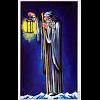Sign in to follow this
Followers
0

What is the meaning of Siddhis or 'special powers'?
By
Nikolai1, in General Discussion

By
Nikolai1, in General Discussion